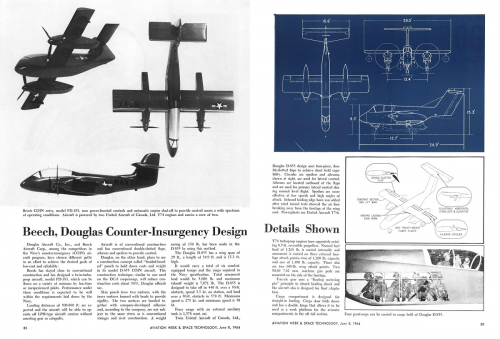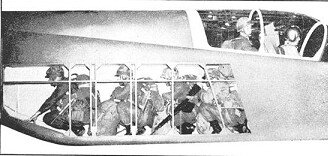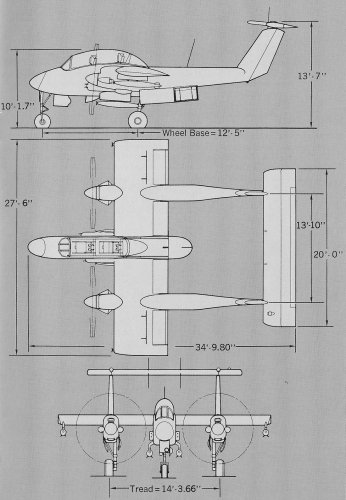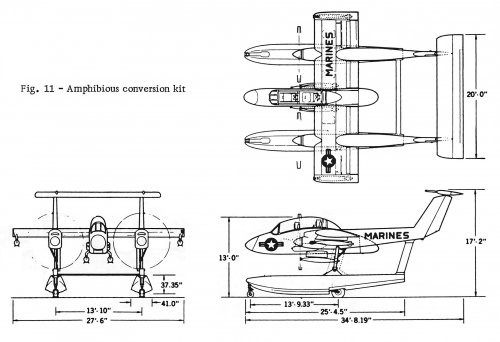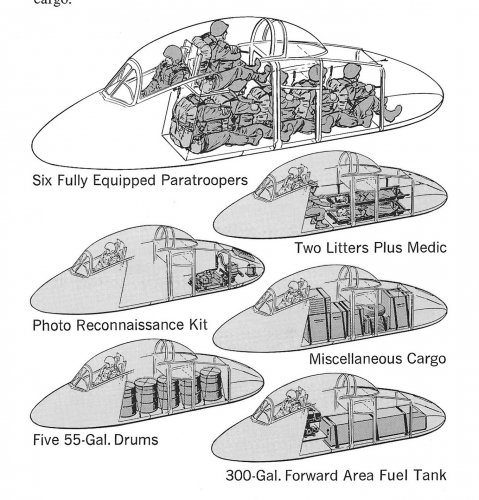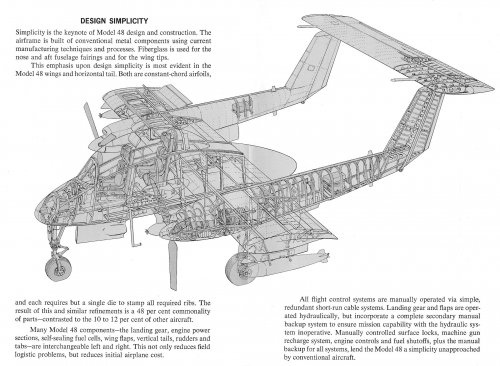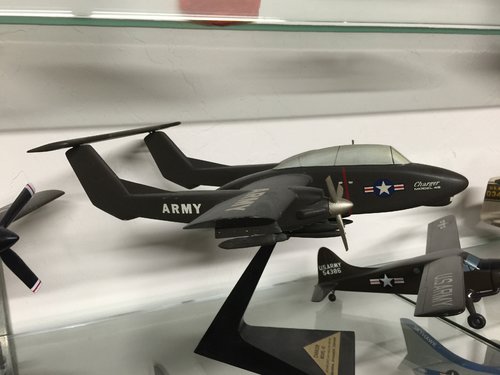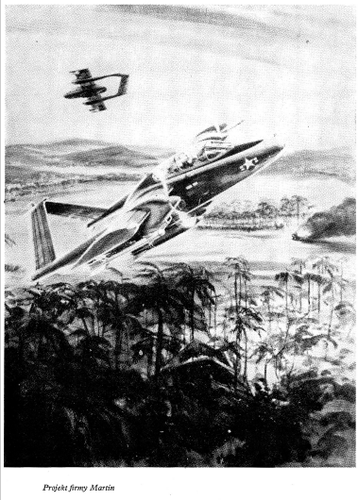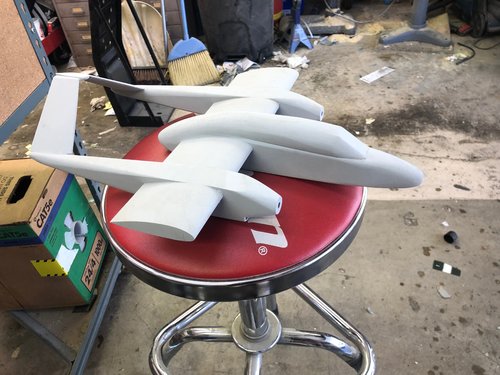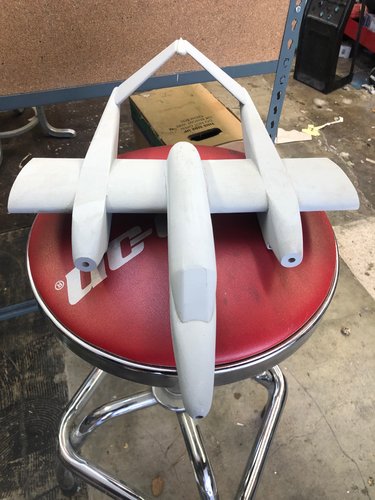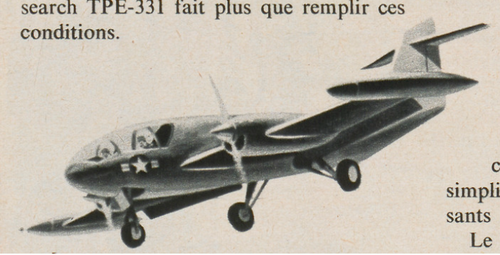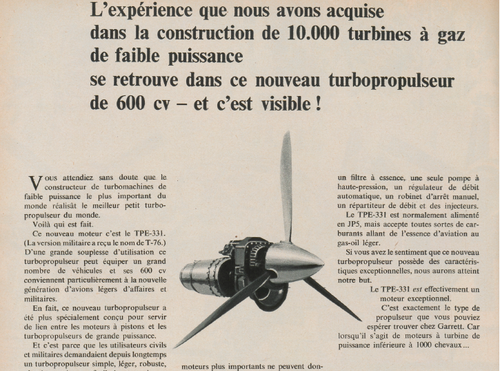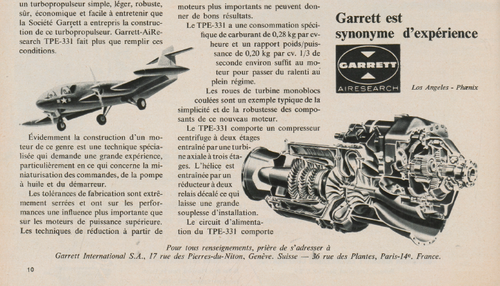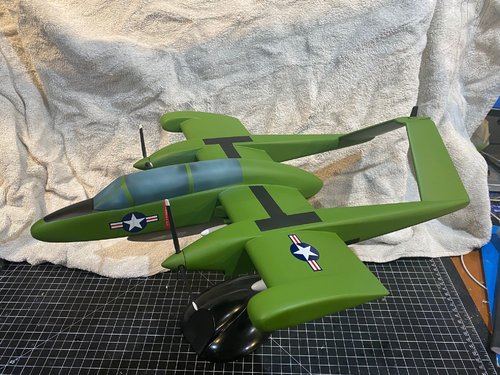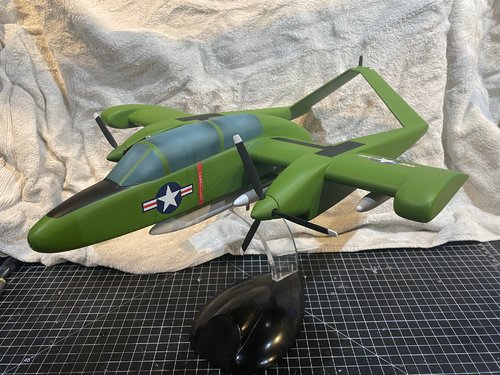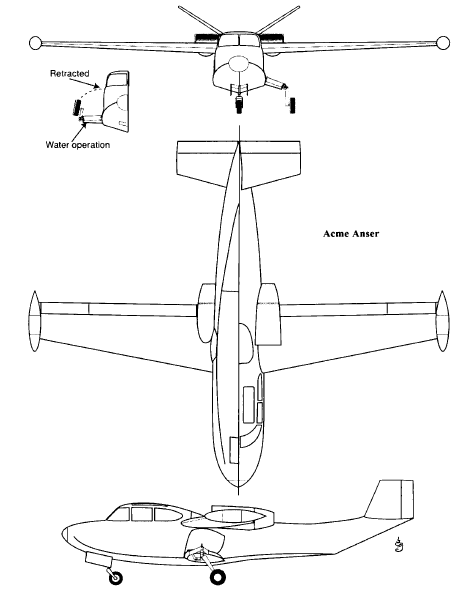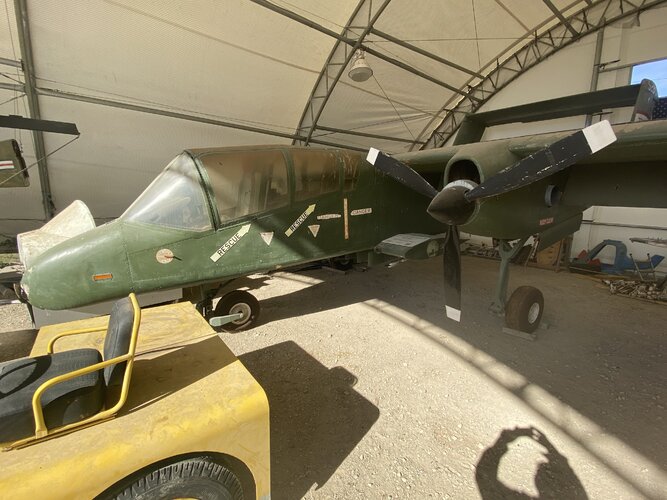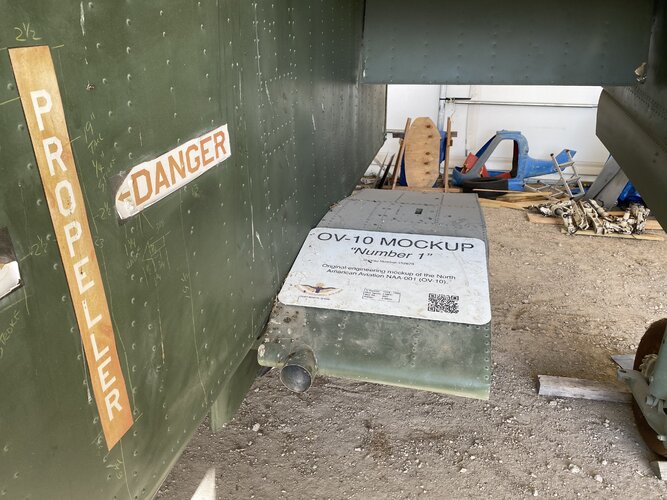You are using an out of date browser. It may not display this or other websites correctly.
You should upgrade or use an alternative browser.
You should upgrade or use an alternative browser.
L2VMA and LARA (Light Armed Reconnaissance Aircraft) designs
- Thread starter elmayerle
- Start date
- Joined
- 21 May 2006
- Messages
- 2,986
- Reaction score
- 2,237
All LARA proposal models were built at the same, unusually small 1/72 scale – undoubtedly a DoD requirement.
Probably so General's could fit them on their desks, without taking up room for their cigar boxes
Regards
Pioneer
Last edited:
- Joined
- 21 May 2006
- Messages
- 2,986
- Reaction score
- 2,237
Nice contribution thanks RAP
Can't help but notice in meeting the 'six troop transportion requirements', that Beech located one of the soldiers in the rear most of the cockpit? But alas I only count five troop's....wonder where the sixth is located?
Regardless, it doesn't look overly comfortable - especially after two weeks in the bush, when living on ratpacks/MRE's
Regards
Pioneer
Attachments
kenfalzon
I really should change my personal text
- Joined
- 22 September 2011
- Messages
- 33
- Reaction score
- 19
- Joined
- 27 December 2005
- Messages
- 17,706
- Reaction score
- 26,136
Thats a Boeing AX design, not LARA.
- Joined
- 11 March 2011
- Messages
- 302
- Reaction score
- 1,161
famvburg
I really should change my personal text
- Joined
- 24 July 2011
- Messages
- 386
- Reaction score
- 54
About 30+ years ago, my first dealings with resin display models was with Rick’s Models out of Ohio, I think. He sold basic blank kits and finished models. Nearly all of his models were 1/48, and since my scale is 1/72, I asked if there was any hope for us 1/72 fans. He said “No, the preferred scale for display models is 1/48”. Of course, the would custom-build anything in any scale, for a price. In 1989, I did buy a solid resin 1/72 B-2 and XF-12 Rainbow from him tho.
- Joined
- 11 March 2011
- Messages
- 302
- Reaction score
- 1,161
Rick bought a lot of models from Al Parker over the years. You may recall the yellow resin with the stinky smell. We've come a long way since then with newer materials that are lighter, sandable, and stable.
kenfalzon
I really should change my personal text
- Joined
- 22 September 2011
- Messages
- 33
- Reaction score
- 19
Thanks overscanThats a Boeing AX design, not LARA.
kenfalzon
I really should change my personal text
- Joined
- 22 September 2011
- Messages
- 33
- Reaction score
- 19
understood hesham. yes Grumman's designations are numerous, and G-340 might make sense.Yes I am sure,but we can say it's a different or a developed version of G-134A.
- Joined
- 11 March 2011
- Messages
- 302
- Reaction score
- 1,161
An interesting feature of this Martin proposal with its inverted v tail is the use of exhaust gases for tail plane steering augmentation at low flight speeds. The turboprop's exhaust gases are rooted within the tailbooms and exhausted over the rudders. It was developed and patented by Hans Multhopp, chief designer of the Ta-183, during his time at Martin.
- Joined
- 17 May 2008
- Messages
- 683
- Reaction score
- 1,439
Have you seen this L2VMA Maverick?
Source: eBay North American Aviation Brochure L2VMA Maverick
Not the seller or associated with them.
Bill






Source: eBay North American Aviation Brochure L2VMA Maverick
Not the seller or associated with them.
Bill
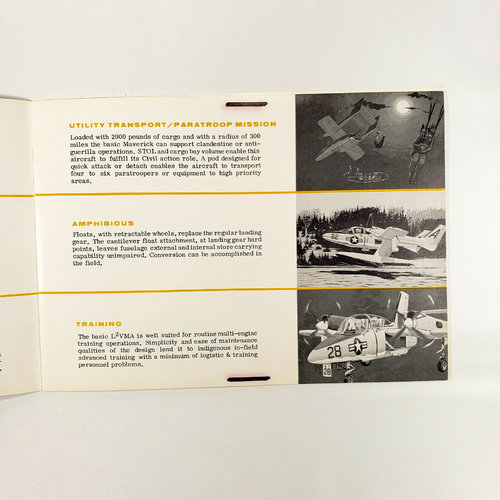
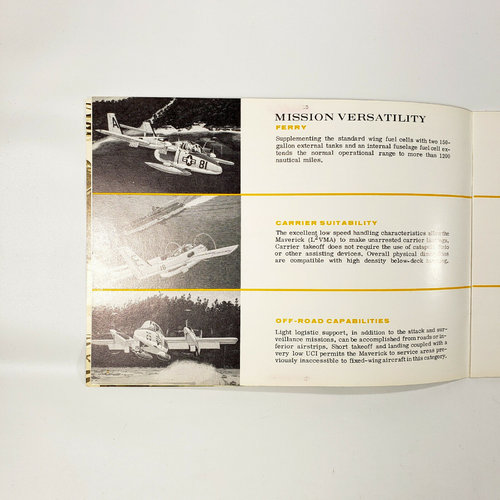
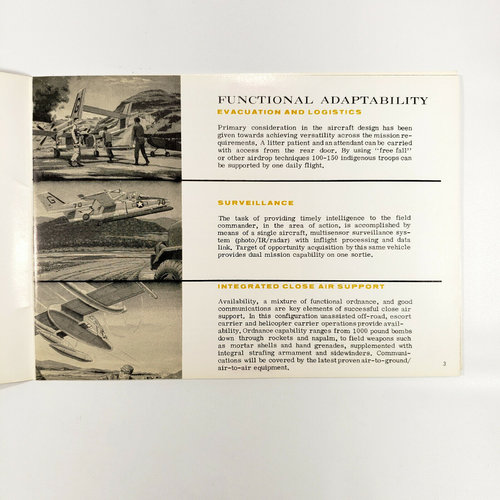
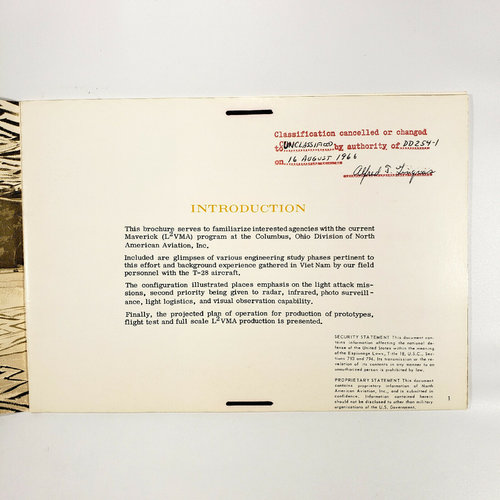
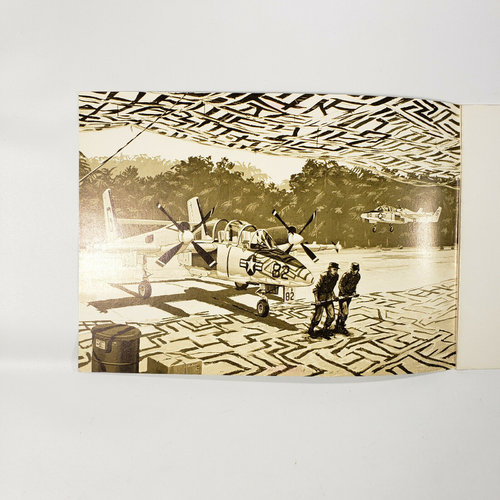
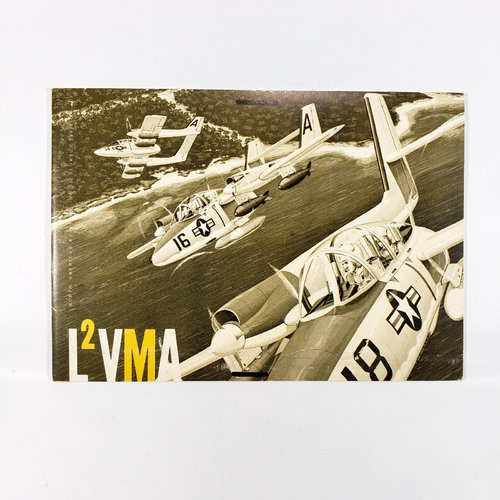
- Joined
- 17 May 2008
- Messages
- 683
- Reaction score
- 1,439
Have you seen this L2VMA Maverick?
Source: eBay North American Aviation Brochure L2VMA Maverick
Not the seller or associated with them.
Bill
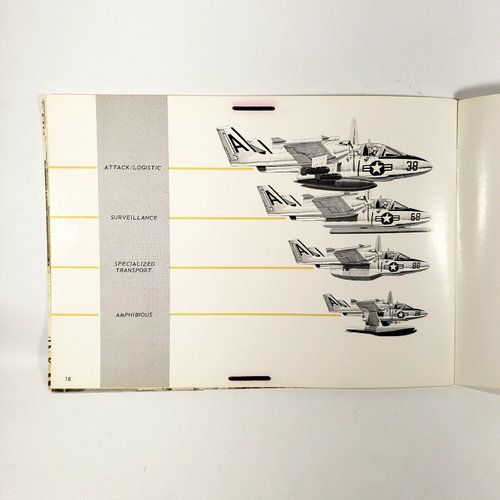
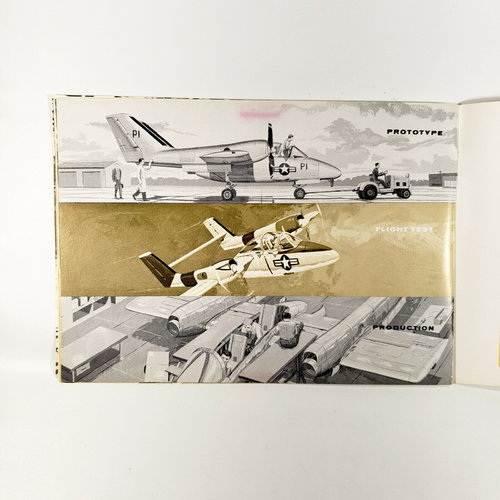
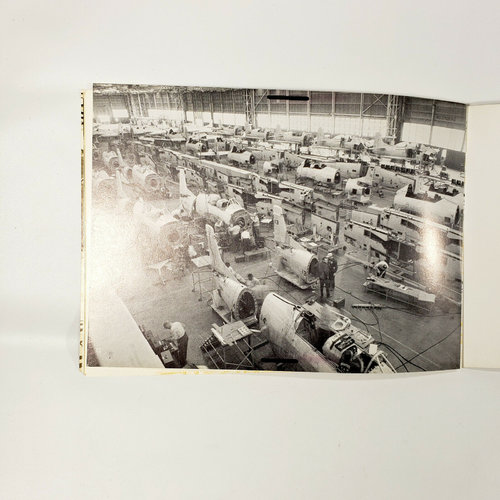
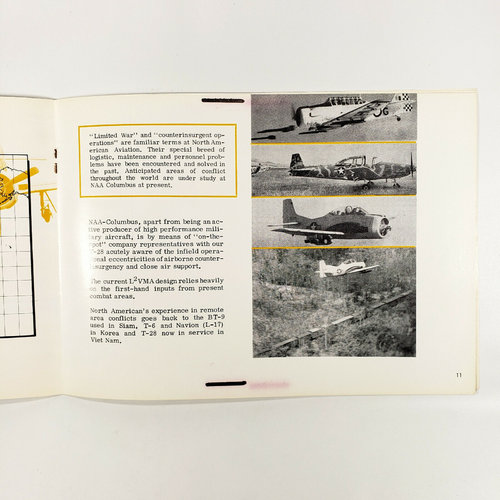
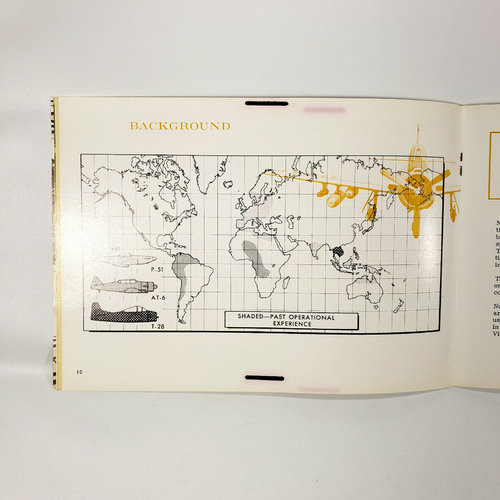
K.P. Rice passed away on December 26, 2019It would be a very interesting book as the LARA project was basically devised by two USMC aviators at China Lake - Col. K.P. Rice (who designed the triple ejector rack) and Maj. William Beckett - who even started building their own prototype before the project was turned into a major quad service acquisition. Of course USAF managed to destroy the projects intent from inside as it would have undermined much of their air concept and perceived monopoly. The main idea of the LARA being a short wingspan and highly simple to fly and maintain aircraft that can be attached to infantry battalions and other units like a jeep or a small boat. The OV-10 is a great plane but it’s no LARA.
Have you seen this L2VMA Maverick?
Source: eBay North American Aviation Brochure L2VMA Maverick
Thanks for the link, hadn't seen that. I've sent an offer... way less than the seller is asking for, but what they're asking for is kinda nutty.
- Joined
- 26 May 2006
- Messages
- 34,810
- Reaction score
- 15,695
Hi boys,
searching the previous posts about the LARA/COIN requirement (one of my favourite matters, for various and complex reasons) I found that some pictures I Have were never enclosed.
Two of them are particularly intriguing as I cannot say if are pure fiction or some real projetcs. The pictures are clipping (without any note about the subject) from two different advertisings; i think from an aircraft engine manifacturer and published on 'Aviation Week' circa 1967.
One other is the full scale mock-up of the Martin entry (rarely seen and still without known designation, I think).
The last is a cutaway drawing of the transport version of North American Na-300 (NA-301?).
Hoping you enjoy all
My dear Nico,
maybe they were from Garrett company,that is from Aviation magazine 1964,and this firm designed some aircraft;
Attachments
Last edited:
- Joined
- 11 March 2012
- Messages
- 3,244
- Reaction score
- 3,171
Yes
Yes Basil,
Blown flaps were all the rage for heavily-loaded jets back during the 1960s. Bristol Buccaneer and Lockheed F-104 both had blown flaps to improve landing performance.
Blown control surfaces were needed to compensate for the short tail moment arm on LARA.
A disadvantage is that blowing hot air through tail booms vastly increases their heat signature at the same time that heat-seeking missiles were becoming fashionable.
The concept is being revived for the next generation of stealthy fighters to help reduce radar signature of aileron hinges.
An interesting feature of this Martin proposal with its inverted v tail is the use of exhaust gases for tail plane steering augmentation at low flight speeds. The turboprop's exhaust gases are rooted within the tailbooms and exhausted over the rudders. It was developed and patented by Hans Multhopp, chief designer of the Ta-183, during his time at Martin.
Yes Basil,
Blown flaps were all the rage for heavily-loaded jets back during the 1960s. Bristol Buccaneer and Lockheed F-104 both had blown flaps to improve landing performance.
Blown control surfaces were needed to compensate for the short tail moment arm on LARA.
A disadvantage is that blowing hot air through tail booms vastly increases their heat signature at the same time that heat-seeking missiles were becoming fashionable.
The concept is being revived for the next generation of stealthy fighters to help reduce radar signature of aileron hinges.
Last edited by a moderator:
- Joined
- 11 March 2012
- Messages
- 3,244
- Reaction score
- 3,171
Does anyone have sketches or photos of the first LARA prototype built at China Lake by Rice and Beckett?It would be a very interesting book as the LARA project was basically devised by two USMC aviators at China Lake - Col. K.P. Rice (who designed the triple ejector rack) and Maj. William Beckett - who even started building their own prototype before the project was turned into a major quad service acquisition. Of course USAF managed to destroy the projects intent from inside as it would have undermined much of their air concept and perceived monopoly. The main idea of the LARA being a short wingspan and highly simple to fly and maintain aircraft that can be attached to infantry battalions and other units like a jeep or a small boat. The OV-10 is a great plane but it’s no LARA.
It will amusing to compare their concept with what finally entered service.
I just watched “Pentagon Wars” about how the U S Army procured the M2 Bradley armoured infantry fighting vehicle.
Last edited:
Riggerrob,
yes, passing turbine gases through long fuselage pipes would probably need serious heat isolation of the ducts for the Martin concept - besides the loss of room for fuel. However when the gases reach the exhaust slot at the rudders they would have perhaps cooled off enough to provide no relevant heat signature for missiles.
Interesting - I did not know about the radar masking ability via hot gases.
yes, passing turbine gases through long fuselage pipes would probably need serious heat isolation of the ducts for the Martin concept - besides the loss of room for fuel. However when the gases reach the exhaust slot at the rudders they would have perhaps cooled off enough to provide no relevant heat signature for missiles.
Interesting - I did not know about the radar masking ability via hot gases.
jmspeedfreak
ACCESS: Restricted
- Joined
- 23 September 2008
- Messages
- 32
- Reaction score
- 56
In terms of heat isolation as long as there is a reasonable flow of air over the transfer ducts they potentially wouldn't need much more than some basic heat-shielding. Lot of mixing at the rudder so potentially not the end of the world either - in any case the two engines would make a much more dominant target for an IR sensor surely?
jmspeedfreak
ACCESS: Restricted
- Joined
- 23 September 2008
- Messages
- 32
- Reaction score
- 56
Really liked that Martin design, similar to the Charger but the exhaust blown tail would have helped a lot with some of the issues of the latter. Deep cambered flaps would drive a big nose down pitching moment so pitch authority at low speed to maintain positive AoA control would have made the handling a lot more direct (maybe, possibly, perhaps!)
jmspeedfreak
ACCESS: Restricted
- Joined
- 23 September 2008
- Messages
- 32
- Reaction score
- 56
I realised this morning that it (looks like) the whole engine mass flow was going down the booms so definitely not just bleed air. I had an automotive program where close coupled catalysts at 900deg only required coated steel heatshield spaced less than 10mm off the cat to drop temps to under 180deg.C but I imagine inside the confines of the boom structure it could get pretty warm. I would expect they intended to have some cooling flow ducted in around the jetpipe to keep temperatures down. Actually ejecting the flow through the tail plane slots looks like a sensible way to reduce IR signature if anything.
Does anyone know if I could find a copy of the Martin proposal anywhere? I think some of the hardcore here ganged together to buy one off ebay(?)
Does anyone know if I could find a copy of the Martin proposal anywhere? I think some of the hardcore here ganged together to buy one off ebay(?)
- Joined
- 4 May 2008
- Messages
- 2,439
- Reaction score
- 754
the only thing that would cause concern (at least IMHO) is that the pitch response is coupled with engine throttle with this type of blowing. I'm sure it can be solved somehow, but i don't know how much of a headache that would be.
jmspeedfreak
ACCESS: Restricted
- Joined
- 23 September 2008
- Messages
- 32
- Reaction score
- 56
Brilliant, thanks Basil.
Our company has been working on very high power motors to drive empennage mounted compressors to achieve similar but with 'cold' air.
Our company has been working on very high power motors to drive empennage mounted compressors to achieve similar but with 'cold' air.
jmspeedfreak
ACCESS: Restricted
- Joined
- 23 September 2008
- Messages
- 32
- Reaction score
- 56
Well described patent document, I was thinking the single side engine out issues for the tail ie. Loss of control authority; must have been a concern for the customer... Until I remembered that all the LARA concepts were essentially very vulnerable to this failure mode. All these concepts could be redusted off with electric distributed propulsion or hybrid systems to reduce the weakness of the aircraft in this regard.
- Joined
- 11 March 2011
- Messages
- 302
- Reaction score
- 1,161
Well, you may recall the build shots last July. FINALLY almost done with the Martin COIN.. A lot of fill in goodie projects were done in between and now I am close to the finish. I just mounted the la bombas and hopefully will get the Marine markings done in white in a few days. Will have to screen them since we can't do the usual LED prints. She's a big one... 16 inch wing span. Will do some beauty shots when all done. Enjoy...
Attachments
- Joined
- 9 October 2009
- Messages
- 21,928
- Reaction score
- 13,550
As we say here in Ireland, Go hálainn!
- Joined
- 19 July 2016
- Messages
- 4,260
- Reaction score
- 3,443
A cracking piece, very nicely done.
jmspeedfreak
ACCESS: Restricted
- Joined
- 23 September 2008
- Messages
- 32
- Reaction score
- 56
Fabulous!
- Joined
- 26 May 2006
- Messages
- 34,810
- Reaction score
- 15,695
Odd Info about ACME Proposal ?,
In the early 1960s resources were directed to a twin-jet amphibious Counter Insurgency fighter of the same general configuration, but with a fighter cockpit configuration and other accommodations. The COIN fighter selected at the time was North American OV-10A. I worked on ACME's COIN aircraft, but lost contact with the organization later in the '60s. (— Joseph F Smith Jr 3/18/04).
In the early 1960s resources were directed to a twin-jet amphibious Counter Insurgency fighter of the same general configuration, but with a fighter cockpit configuration and other accommodations. The COIN fighter selected at the time was North American OV-10A. I worked on ACME's COIN aircraft, but lost contact with the organization later in the '60s. (— Joseph F Smith Jr 3/18/04).
- Joined
- 26 May 2006
- Messages
- 34,810
- Reaction score
- 15,695
In the early 1960s resources were directed to a twin-jet amphibious Counter Insurgency fighter of the same general configuration, but with a fighter cockpit configuration and other accommodations. The COIN fighter selected at the time was North American OV-10A. I worked on ACME's COIN aircraft, but lost contact with the organization later in the '60s. (— Joseph F Smith Jr 3/18/04).
Please can anyone make a drawing to this Project,it was based on ACME
A.1 Anser,with a tandem two-seat looks like OV-10,and a landplane version,
just a sketch if possible ?.
Attachments
While attending an outdoor meeting at the Fort Worth Aviation Museum this morning (assisting in a very small way with the restoration of YF-16 number 2), I ran across an interesting LARA artifact.
The OV-10 Association is part of the museum and in addition to two OV-10 aircraft, the original engineering mock-up of the OV-10 is on site, stashed in an open hangar. It is in fairly decent shape, overall. It had been restored elsewhere in 2001, but has spent some time outdoors over the past 19 years.
I was a bit pressed for time and only took three photos.
Note the original weapon wing fairings, horizontal instead of angled down. The weapon pylon was well populated with practice bombs, appearing to be non standard.
The last photo is of the last remanent of YOV-10A number 4, a right side tail boom and fin/rudder assembly, still bearing the Tri Service tail flash.
The OV-10 Association is part of the museum and in addition to two OV-10 aircraft, the original engineering mock-up of the OV-10 is on site, stashed in an open hangar. It is in fairly decent shape, overall. It had been restored elsewhere in 2001, but has spent some time outdoors over the past 19 years.
I was a bit pressed for time and only took three photos.
Note the original weapon wing fairings, horizontal instead of angled down. The weapon pylon was well populated with practice bombs, appearing to be non standard.
The last photo is of the last remanent of YOV-10A number 4, a right side tail boom and fin/rudder assembly, still bearing the Tri Service tail flash.
Attachments
Last edited:
Similar threads
-
-
-
'Demon' to 'Phantom' - the evolution of McDonnell's F-4 Phantom II
- Started by Archibald
- Replies: 38
-
-

